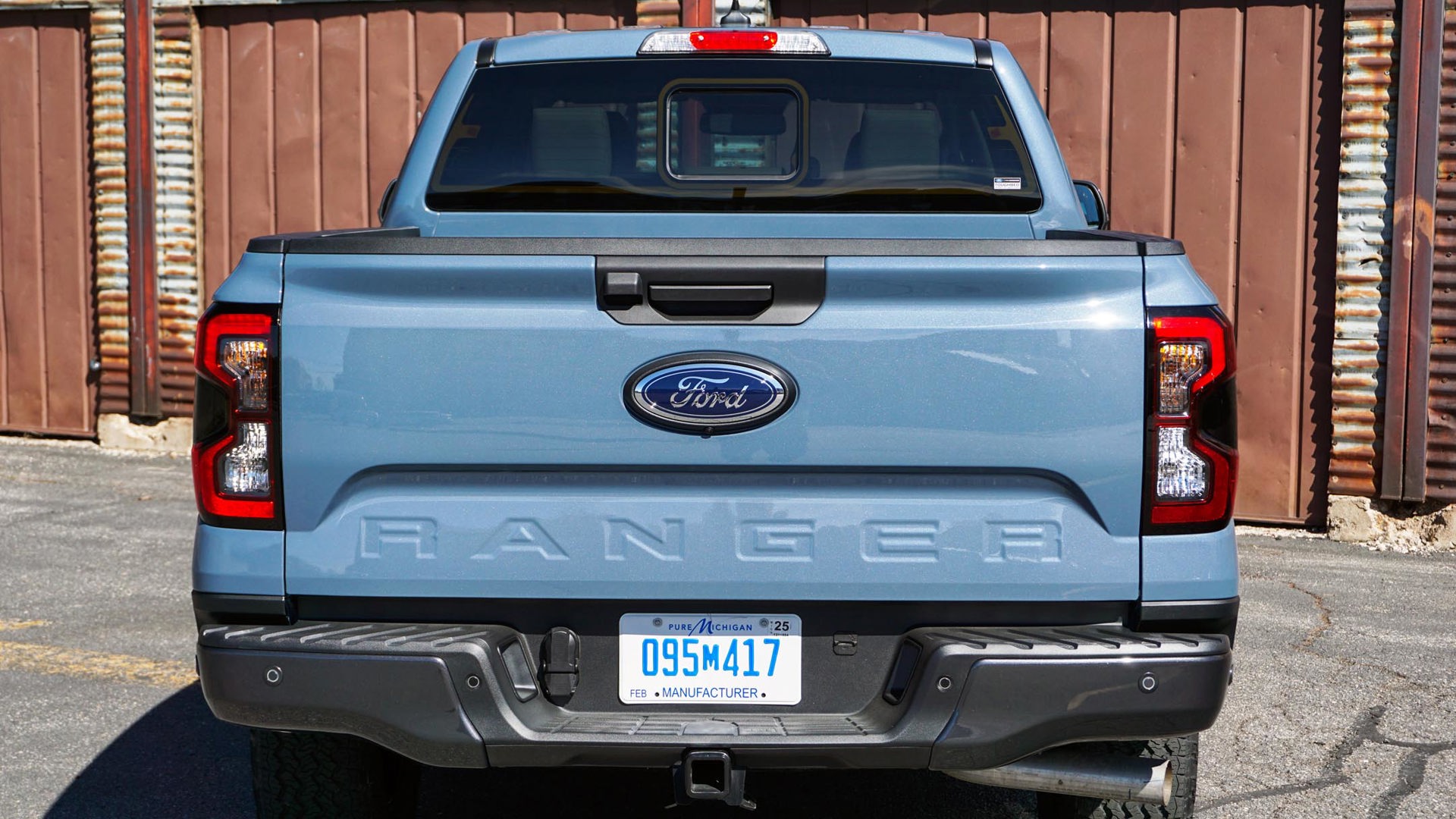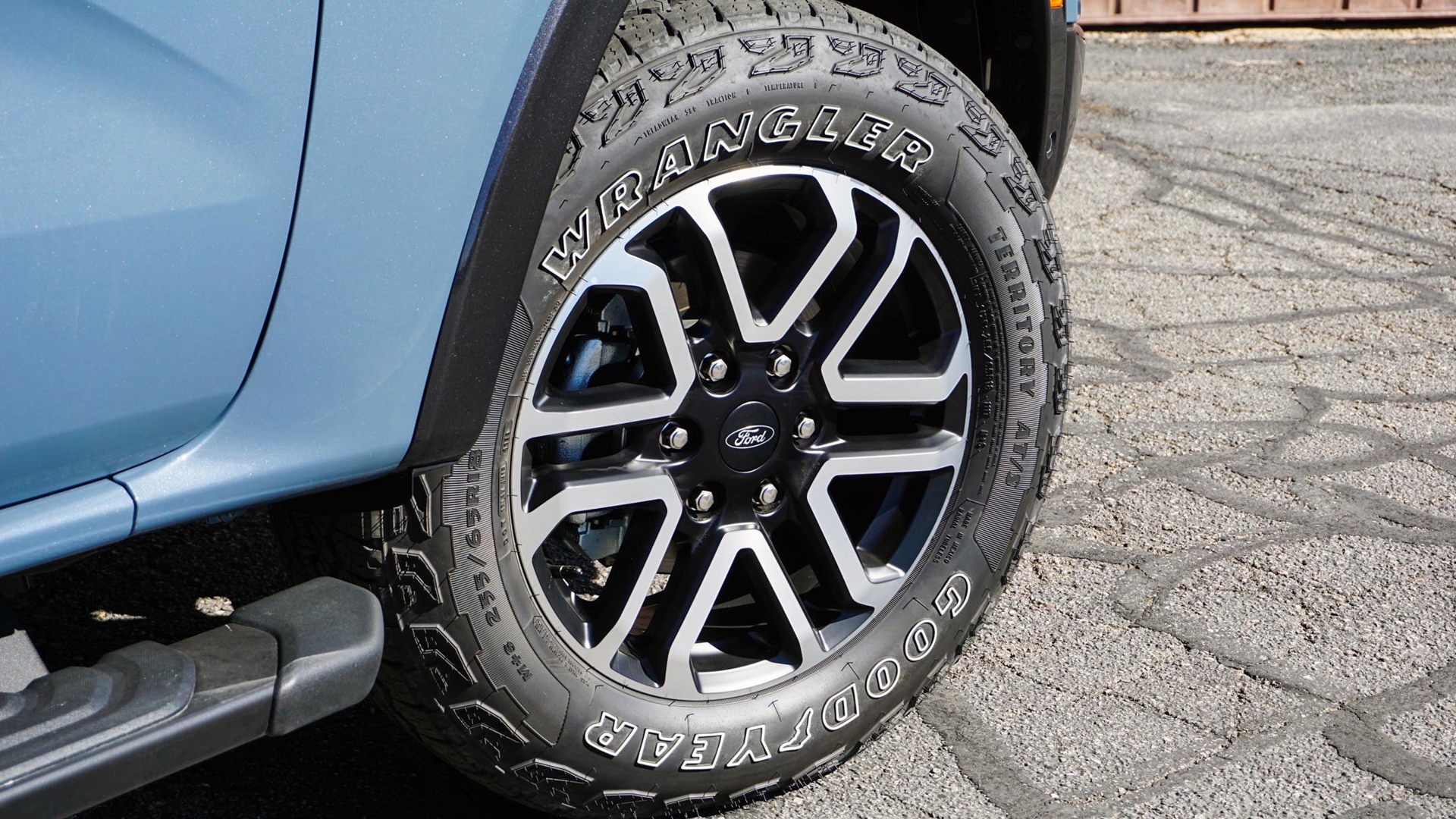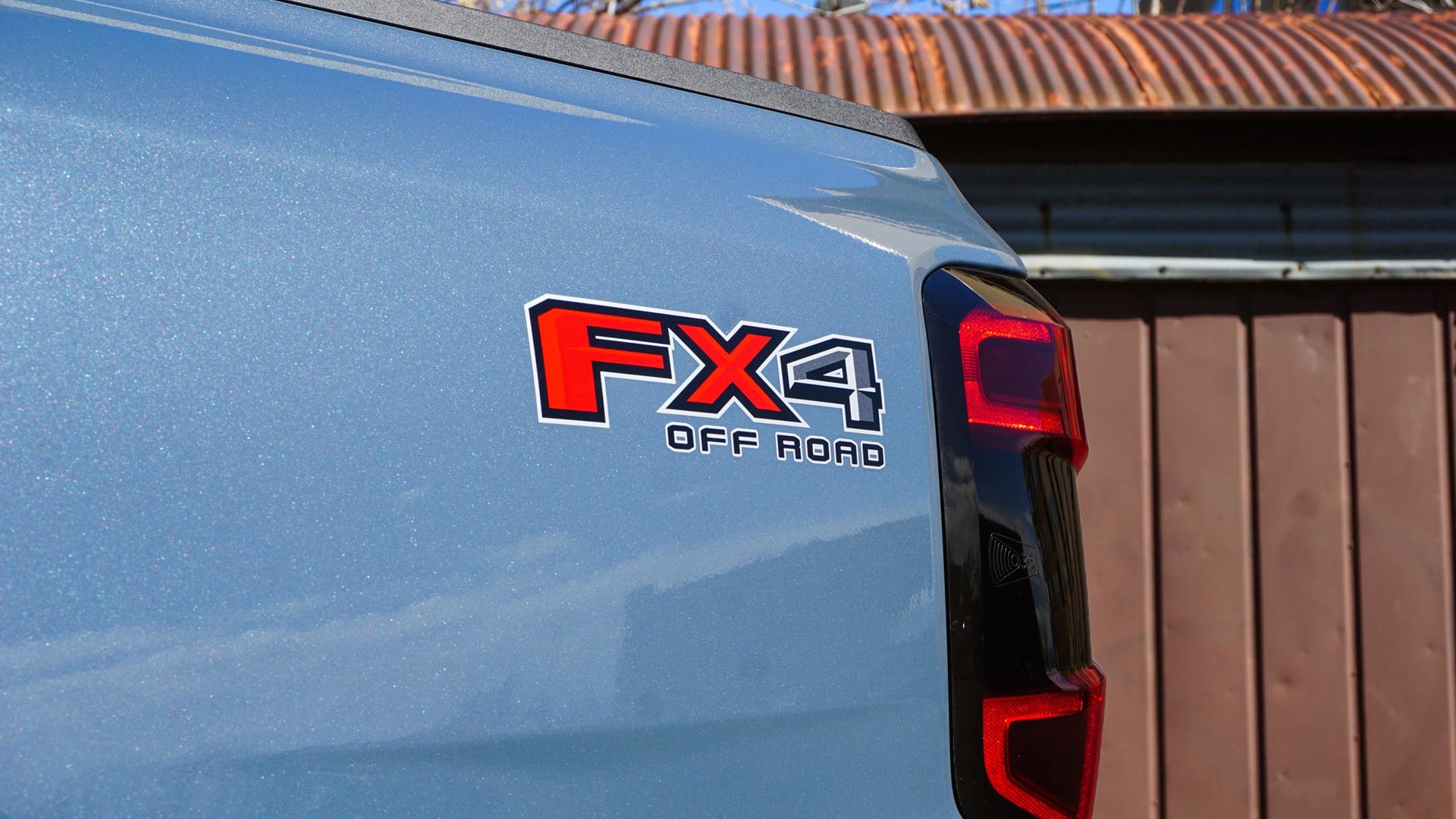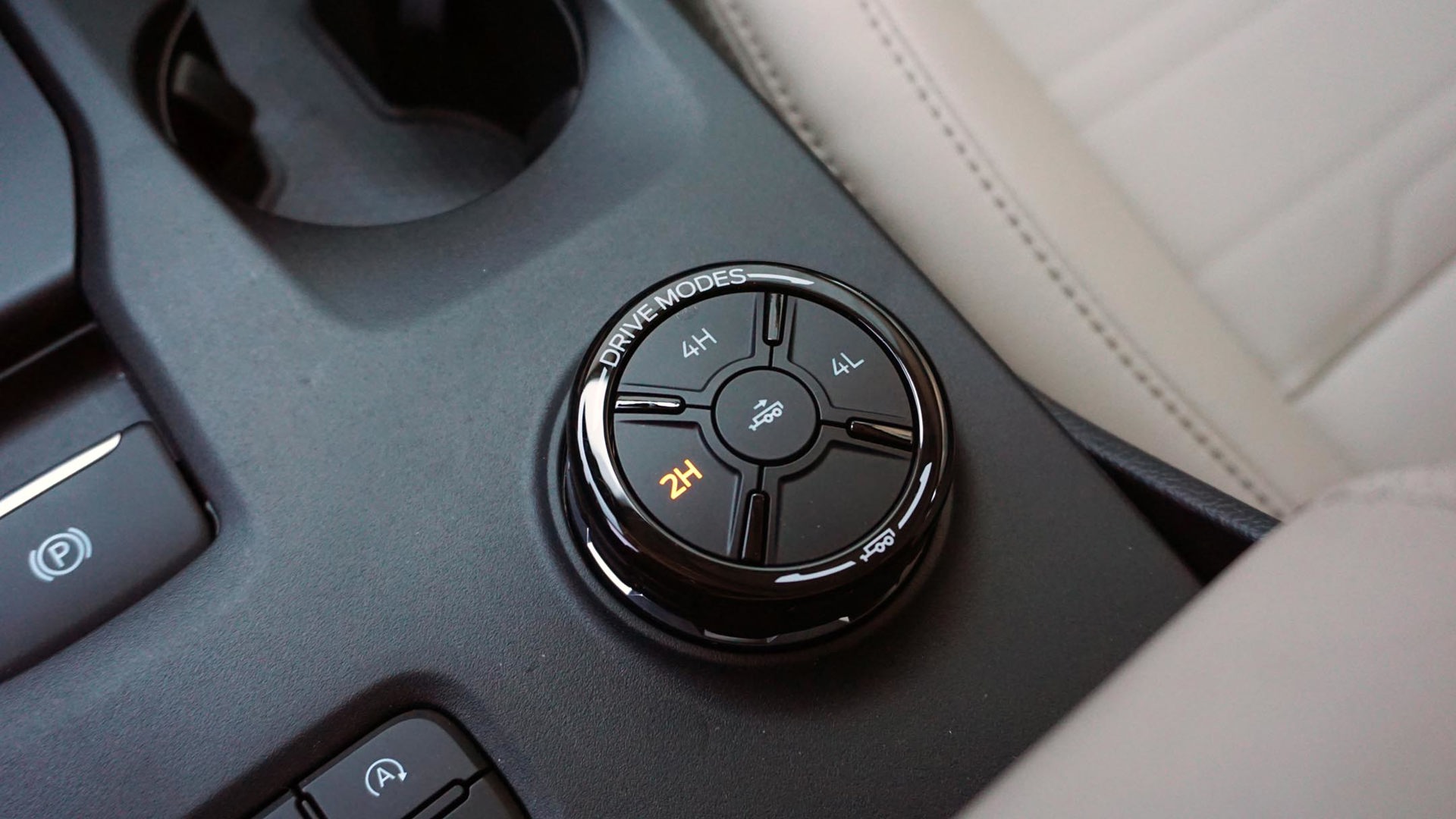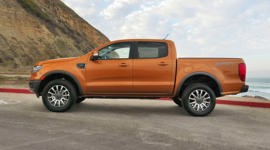For as good as the outgoing Ford Ranger was, there’s no denying it felt a little outdated right from the start.
That’s mostly because it was. Although it went on sale in North America in 2019, it was available in other parts of the world about eight years earlier. That’s the kind of prolonged production run an automaker dreams of as far as profitability goes, but it doesn’t do much for its competitive position in this segment of right-sized pickups, where rivals from the likes of General Motors (GM) and Toyota have been on the receiving end of recent overhauls.
That makes the arrival of the redesigned 2024 Ford Ranger all but ideal for more reasons than one. And while the competition might be stiff amongst modern midsize trucks, this one has a few tricks of its own make up for lost time.
Refreshed Fundamentals

The 2024 Ranger has been simplified compared to its predecessor in terms of layout. While the last truck was offered in both cab-and-a-half and full crew cab configurations, this one only comes in the latter. Likewise, the old six-foot bed is gone, with only the five-foot unit remaining.
While it’s about the same size as before, the 2024 Ranger gets a couple key new measurements that matter. The wheelbase, for example, has been stretched roughly 51 mm (2.0 in), while the track – that’s the distance between the wheels – has been widened about as much. Additionally, the rear shocks are now mounted outside the frame rails, resulting in smaller wheel wells and improved stability.
Previously, pulling on the top edge of the bed would make the entire truck rock and shake on its suspension somewhat awkwardly. Not so here, however – or at least not more so than any other truck out there. It feels more planted, whether when parked or out on the road, while remaining as nimble and easy to manoeuvre as its size suggests.
Overall, there’s a more defined truck-like quality to the ride this time around. Apparently current and prospective customers told Ford they wanted a stronger sense of toughness from the Ranger, and the engineers behind this redesigned model made it so. While its on-road manners remain refined and civilized, there’s less likelihood of confusing this pickup for a crossover from behind the wheel.
Restyled Inside and Out
The styling has been toughened up, too, with the redesigned Ranger looking decidedly less European than its predecessor. Better still, Ford’s designers didn’t simply deliver a smaller F-150 – they made a truck that can stand on its own four wheels as far as aesthetics are concerned.
Where the old truck was smooth this one is chiselled, although the design team didn’t make it too busy, either. Simple crease lines in the body panels add just enough character to keep it from looking slab-sided, while the gaping grille flanked by C-shaped headlights gives the Ranger a distinct new face.
The cabin isn’t quite as fresh and fun as the one in the smaller Ford Maverick, but it’s unquestionably modern. There are no conventional gauges here; they’ve been replaced with full digital instrument displays that span eight- or 12.4 inches, depending on trim. That’s paired with a massive portrait-oriented touchscreen (10.1- or 12 inches) that dominates not just the dash but the entire interior design.
Improved Functionality

There’s a case to be made about the old truck’s array of climate and infotainment controls, and how easy it was to interact with compared to this interface that relies heavily on the touchscreen. However, as far as infotainment is concerned, the 2024 Ranger is vastly improved over its predecessor. Wireless smartphone connections allow both Android and Apple devices to be mirrored in massive format on the central screen, while Ford’s built-in menu structure is straightforward enough to learn on the fly.
Graciously, there’s still a handful of physical controls for climate basics, plus a drive dial on the centre console that can be used to cycle through the various modes on offer while doubling as the controller for Ford’s trailer back-up assist system. The optional system takes the guesswork out of reversing with a trailer hooked up to the back, allowing the truck to be steered by simply turning the dial – and doing so in the desired direction of travel rather than the opposite when using the steering wheel. While it’s not an automated system – the driver is still in control of changing direction, as well as brake and throttle inputs – it makes precision manoeuvres more predictable.
Less praise-worthy is the Ranger’s new digital gear selector that comes in the Lariat trim, as well as the rugged Ranger Raptor. While other automakers have implemented similar systems, the lack of definition between reverse and neutral, for instance, results in more missed shifts than it should.
Pick of Powertrains
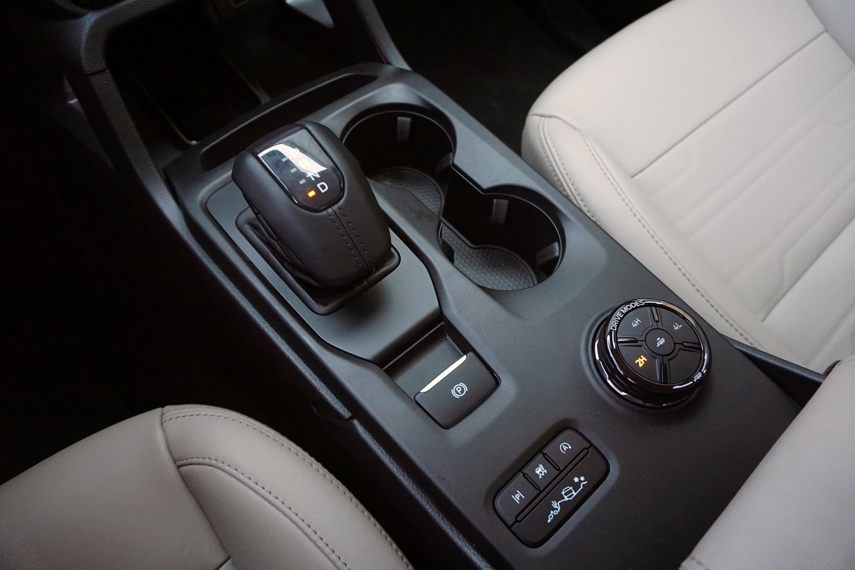
While the last version of the Ranger was offered with a single engine-transmission team to go with its standard four-wheel drive in Canada, the new truck has different powertrains to pick from – or at least it will. Later this year a twin-turbocharged 2.7L V6 will be available, apparently to appease those who felt this Ford needed more power. Then there’s the Raptor and its even stronger six-cylinder.
However, the engine that carries over – a turbocharged 2.3L four-cylinder – is more than stout enough on its own, delivering 270 hp and 310 lb-ft of torque. The turbo motor provides generous punch when accelerating from a standing start, with the full serving of torque kicking in at 3,000 rpm. Considering the engine spins away at around 2,100 rpm when cruising at triple-digit speeds, it doesn’t take long to tap into all its motive force when it’s time to pass on the highway, too.
For those willing to wait for its arrival late this year, the 2.7L engine borrowed from the F-150 – as well as the Bronco off-roader – spins up 315 hp and 400 lb-ft. Both engines are paired with the same 10-speed automatic transmission, while towing capacity is unchanged at a maximum of 3,402 kg (7,500 lb).
More Expensive

The newness of the 2024 Ford Ranger comes at a cost – a literal one. While the absence of the entry-level cab-and-a-half configuration explains at least part of the price hike, the $41,870 starting price for the XL trim (plus $2,095 for freight) is nearly $6,000 more than last year’s truck.
Likewise, the XLT starts at $46,120, about $6,000 more than the same trim last year, while the Lariat is priced at $54,320 before extras and taxes – nearly $8,000 richer than the truck that came before it. It’s also worth noting that the V6 engine will add considerably to those prices once it’s available, while packages like the fancy towing tech and FX4 goodies will, too.
Final Thoughts

That the outgoing Ranger was old isn’t exactly a secret. With the 2024 version’s arrival, however, this midsize pickup finally gets the fresh start it deserves – although it doesn’t come cheap.
There’s plenty of new technology and refinement here, but its comparably low price – a byproduct of its age – used to be among the Ranger’s most noteworthy advantages. Either way, the 2024 Ford Ranger has been a long time coming, and it certainly seems like it was worth the wait for those who can stomach the price that comes with it.






